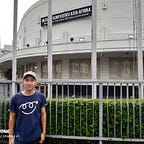Cherry Picking: Unveiling the Dark Side of Seemingly Beneficial Choices
In today’s fast-paced and high-pressure world, we are often faced with numerous choices that require quick decisions. One intriguing phenomenon that frequently emerges is cherry picking, a term that describes the habit of selecting information or evidence that supports a particular argument or decision while ignoring data that doesn’t align with our desires. In the context of human behavior, this practice has broader implications and often goes unnoticed.
What is Cherry Picking?
Cherry picking is the practice of selecting data or information that only supports one side of an argument or viewpoint while ignoring other information that might be more relevant or important. The term originates from the habit of picking cherries that look good and ripe while ignoring the others.
The Impact of Cherry Picking on Decision Making
Cherry picking can be highly detrimental, especially in the context of decision making. When someone focuses only on information that supports their opinion, the decisions made tend to be biased and risky. This can affect various aspects of life, both personal and professional.
1. In Personal Life
In everyday life, cherry picking can lead to a loss of broader perspective. For instance, in interpersonal relationships, someone might only see their partner’s positive actions while ignoring warning signs. This can lead to larger conflicts later on.
2. In the Workplace
In the business world, cherry picking can result in poor strategic decisions. For example, a CEO who only pays attention to positive sales reports and ignores financial statements showing losses could drive the company to the brink of bankruptcy.
Why Do We Engage in Cherry Picking?
Humans naturally tend to seek confirmation of their beliefs and opinions, a phenomenon known as confirmation bias. This is one of the main reasons why cherry picking is so common. Additionally, social and professional pressures to always appear right and competent can also drive this behavior.
How to Avoid Cherry Picking
1. Recognize Personal Biases
The first step is to acknowledge that we all have biases. With this awareness, we can be more critical in evaluating the information we receive.
2. Seek Different Perspectives
It is crucial to seek out different perspectives and listen to opposing opinions. This helps us gain a more complete and objective picture.
3. Use Comprehensive Data
In decision making, ensure that you use comprehensive data and do not just select information that supports your argument.
Conclusion
Cherry picking may seem beneficial in the short term, but its impact can be highly detrimental in the long run. As intelligent and professional individuals, we must strive to avoid this trap by being more critical and open to various perspectives. By doing so, we can make better and wiser decisions, both in personal and professional life.
